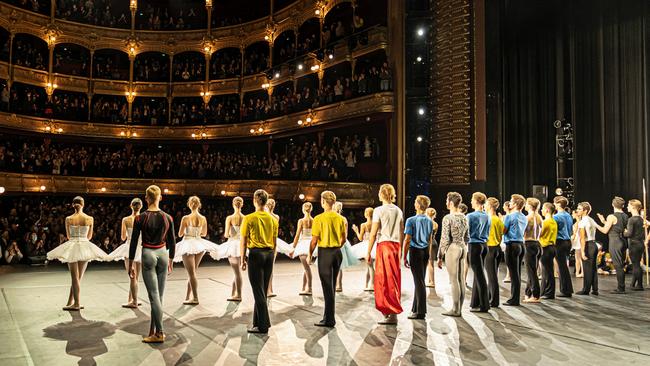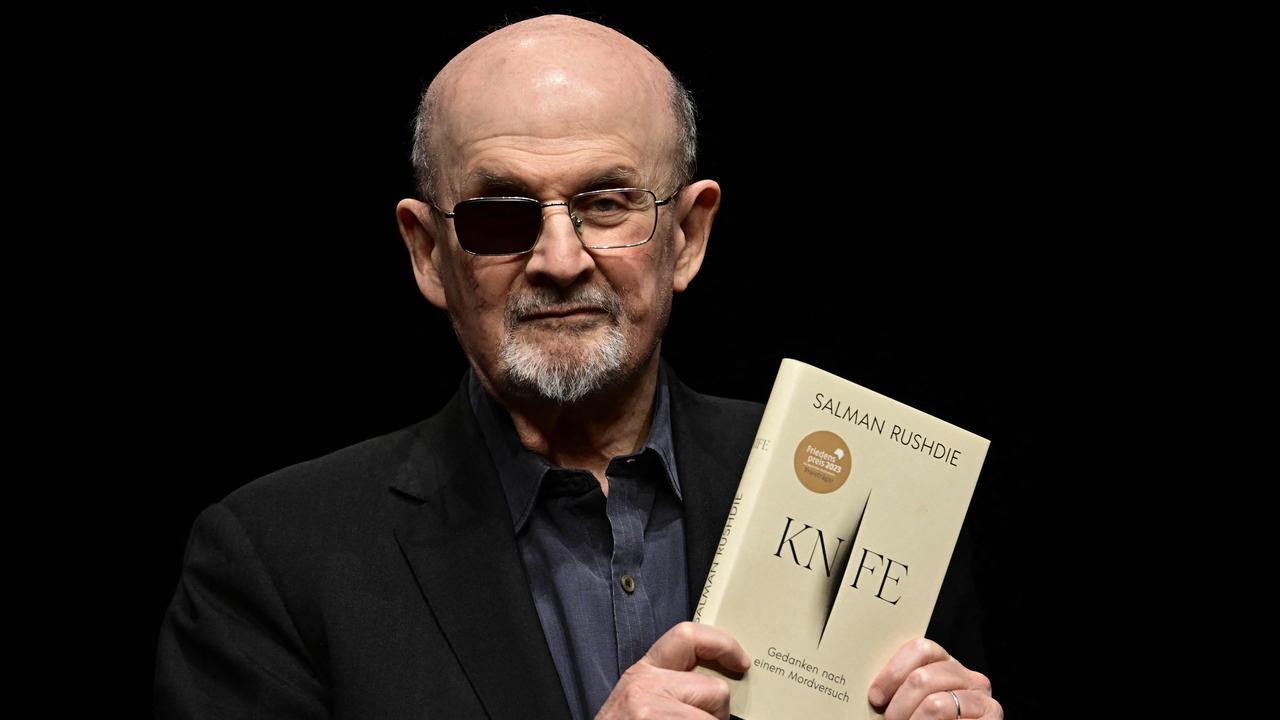Kyiv Ballet still celebrating the art dance as bombs rain on its city
The Kyiv City Ballet has been touring ever since the invasion of Ukraine by Russia – its business as usual for the well travelled troupe.

For the dancers of Kyiv City Ballet, everything was as it should be on February 23 last year. They were in Paris getting ready to perform The Nutcracker, just another classical ballet company on tour. The next day, however, their world turned upside down when Russia invaded Ukraine. Kyiv City Ballet has not been home since.
What started as a two-week tour became what Ivan Kozlov, who founded the troupe a decade ago, calls “the infinity tour”. Stranded in Paris, uncertain when – or if – they could go back to Ukraine, the exiled dancers began an 18-month odyssey of life on the road. Their performances, “spreading a message of peace, hope and resilience”, have taken them around Europe and America. Next up is the Edinburgh Fringe this month, then London for seven performances next month.
“Nobody expected a war,” says Kozlov, speaking to me over Zoom from his new home in Croatia. “I remember a couple of days before we left Kyiv I was in a taxi with my wife and the driver asked us, ‘Do you think something will happen?’ and I said, ‘No, of course not, it’s not possible.’ But on the morning of February 24 we realised our country was under attack.”
Suddenly all their assumptions and expectations were upended. Friends and strangers in the French capital rallied to help Kozlov and his dancers, who had packed for only two weeks away.
Theatres, including the Paris Opera, the Theatre de la Ville and the Theatre du Chatelet, provided studios for classes and rehearsals.
The Accor hotel chain assisted with accommodation for the dancers, while Paris mayor Anne Hidalgo “helped us a lot too”.
When the company went on tour, The Nutcracker costumes – the only ones they had with them – had to be repurposed. “It’s amazing what you can do when you don’t have a choice,” Kozlov says.
Since December last year he and his wife, Ekaterina (who is associate director of Kyiv City Ballet), have been based in Zagreb where they run the company, organise tours and hold rehearsals.
“It was very hard the first year before we found a home in Zagreb,” he says. “Life in Paris was very expensive and I didn’t want to keep asking with my hand out. After eight months it was time to say thank you to Paris. Now it’s great to live in an apartment, unpack your luggage and have a place to call home.”
How does he cope with the stress of keeping Kyiv City Ballet alive? “To be honest, I cannot imagine what I would do without my wife next to me. One head is good, but two heads is better.”
Kozlov, 40, comes across as easygoing in conversation (his colourful English needs no translation), but you know it can’t be easy trying to keep his dancers happy and his company together when the future is so uncertain and money so tight.
“We pay the dancers as much as possible,” he says. “Some dancers stay with us in Zagreb all the time and some dancers have joined other companies but come back to help us out on tour. Apartment renting takes a lot of money, so does food and everything right now, but we have to keep going.”
The perils of war have left the dancers isolated and separated from loved ones at home. “Sometimes the women in the company travel back to Ukraine to meet with their families so it’s a bit easier for them to cope mentally,” Kozlov says. “But it’s not safe to go back at all and the male dancers are absolutely not crossing the border.”
And what about his family? “We are in touch with my family. Most of them are all right, but my parents cannot leave the country because of the grandparents – someone has to look after them. That’s the situation in many families in Ukraine. A lot of people would leave, but they have to stay with their older relatives.”
Kyiv City Ballet is hardworking. Last year it gave more than 150 performances (Kozlov has lost count), a remarkable achievement by any standards but especially impressive when you consider its limited resources and fragile existence. “For us there is no choice,” he says. “We need to sell tickets to stay financially viable and help artists. We have to find work.”
The company relies on ticket sales along with donations from the public and the goodwill of theatres, hotels and travel companies.
Last year the almost 40 dancers undertook a six-week, 15-city tour of the US, offering their mix of traditional bonbons (mostly Russian, but you can’t get away from that with classical ballet) and modern work with a Ukrainian twist.
Wherever they go, by way of payback, the company offers school visits, workshops with children and open classes.
Its month-long residence in Edinburgh isn’t its first visit to Britain – the dancers have already been to York, Bath and Southampton – but it is the highest profile one. “The dancers are very excited about performing in Edinburgh,” Kozlov says. “They can’t wait to go on stage.”
He admits to being nervous about performing at the world’s biggest cultural jamboree – “I’ve never been part of such a big event” – but he also knows Edinburgh is a great place to network. The company may pick up a sponsor or two along with invitations to tour.
The centrepiece of its Edinburgh program is A Tribute to Peace, choreographed by Kozlov and his wife. “It’s about how people connect with each other and solve problems with love and by supporting each other,” he says. “It’s easy to watch, there’s some humour and it has a happy ending.” Also on the bill is the exuberant Men of Kyiv, created by Pavlo Virsky as a “tribute to the spirit of Ukraine and a defiant response to the Russian invasion of the Kyiv City Ballet’s homeland”.
In London’s Sadler’s Wells, the program will be twice as long. As well as Men of Kyiv and A Tribute to Peace it will feature excerpts from the 19th and 20th-century classical canon, pieces such as Le Corsaire, La Bayadere, Flames of Paris, Le Spectre de la Rose and The Dying Swan.
How long can Kozlov keep Kyiv City Ballet going? “We can keep going as long as artists are interested to work with us and audiences want to watch us. Without artists and audiences there is no company.” Nevertheless he and his dancers are keen to return to Ukraine as soon as possible. “We dream about it. We want to go home and perform to our audience, to work in our country and live with our own culture.”
Until then, is there anything he wants to say to the people of Ukraine? “Hold on, stay strong, good will defeat evil. But mostly I want to say that we are so thankful to our soldiers, our heroes who keep our country alive.”
The Times


